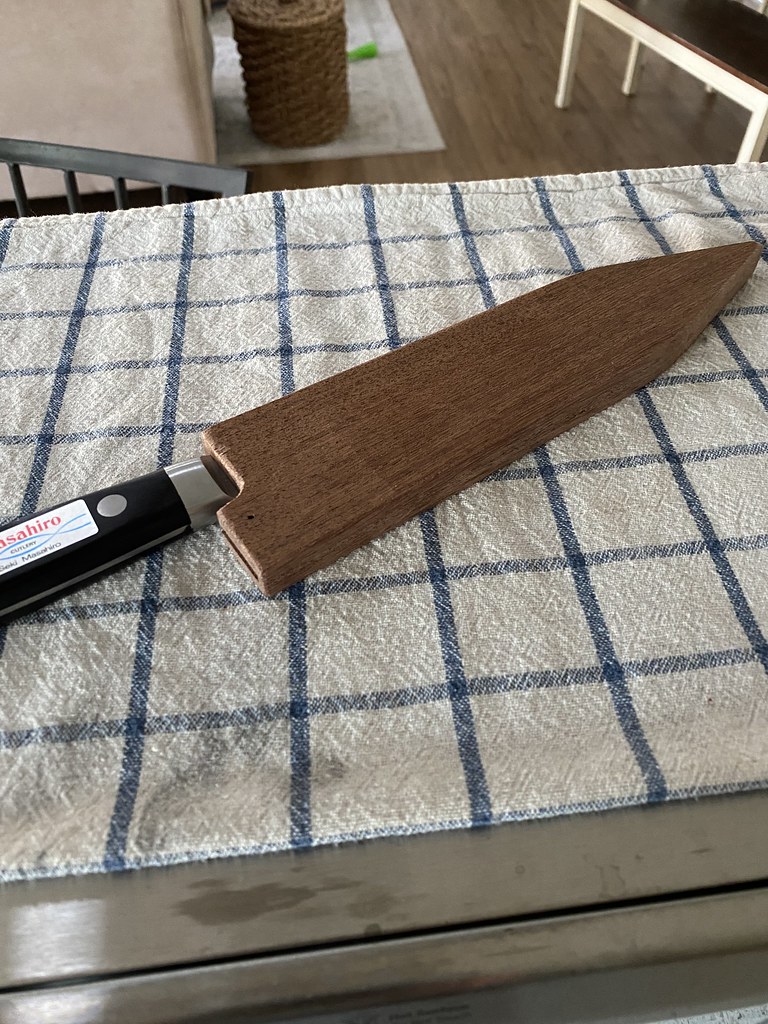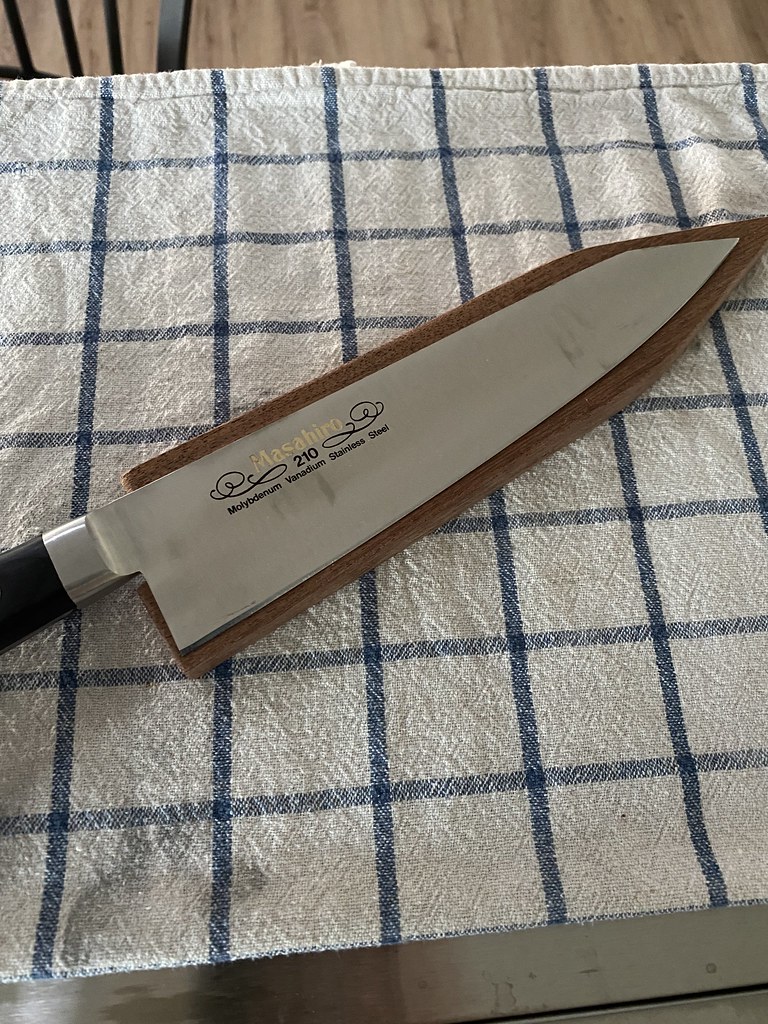After being inspired my Marc and ChefShamrock, I started experimenting with equipping my knives with saya..


In red cedar for Misono dragon slicer...


In red cedar for Misono dragon slicer...


















Thanks for the info on Rockler. I will definitely check them out.Thanks Chef, thanks Jville! The birds eye maple was from a salvaged piece of hardwood flooring, and the walnut was from a beat up table I found at a thrift shop. Both one-off lucky finds. I did get that 15 sq ft box of 1/4" red cedar for $28, which is good to play with, but you don't find many handles in that color family. I do want to try out the burnt finish that you have been doing, but I have to pick up a torch, which I always forget when I am at the store.
Don't know if you ever checked out Rockler. They have a decent selection of woods including some exotics. They offer free shipping on orders over $30 if you sign up for their e-mails. I havent ordered there yet, but I likely will.
I agree with you Jville and I wish I could tell you that all of mine had a tight friction hold, but I am still a rank amatuer so it is sort of hit and miss. Got some wooden cribbage pins on order to make some pins for some of my work.
Could anyone maybe point me in the direction of tools I would need?

















Enter your email address to join: